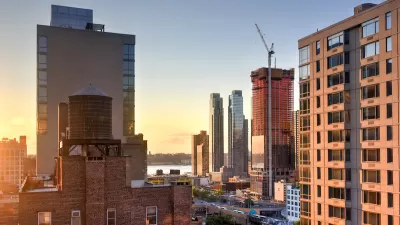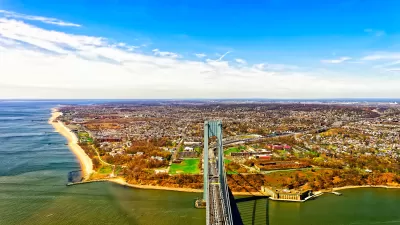The Center for an Urban Future found that ridership in the greater Manhattan area has been up significantly since 1998. But these routes are precisely the ones targeted for service cuts due to decreased revenue.
Our analysis, based on data from MTA New York City Transit, show just how important the city's public transportation system has become for residents living outside the city center:
• 20 of the 22 stations with the largest percentage increase in subway ridership were either in the outer boroughs or in Manhattan north of 96th Street.
• In 2008, 62 stations outside of Manhattan had an average weekday ridership of over 10,000 people, up significantly from 46 stations in 2003 and 36 in 1998.
• More than a quarter of all New York City subway stations-111 out of 425-saw an increase in average weekday ridership of 50 percent or more during the past decade. Brooklyn accounted for nearly half (51) of those stations; there were 28 in Manhattan, 20 in the Bronx and 12 in Queens.
• 13 stations on the L line and nine on the N line were among the 50 fastest growing stations citywide. Other lines with several stations on the top-50 list: the 2 (seven stations), 3 (six stations), F (five stations), J (five stations) and M (five stations).
The growth in outer-borough bus ridership, meanwhile, dwarfed Manhattan's during the same period. Overall, 81.7 percent of the gain in bus riders occurred outside Manhattan. Queens experienced a 28.4 percent increase; Brooklyn a 21.9 percent increase; the Bronx a 23.5 percent increase and Staten Island a 28.4 percent increase. By contrast, Manhattan's bus ridership grew by only 7.6 percent since 1998. (It actually experienced a 6.7 percent decrease between 2003 and 2008, the only borough to do so.)
FULL STORY: Transit Overload

Maui's Vacation Rental Debate Turns Ugly
Verbal attacks, misinformation campaigns and fistfights plague a high-stakes debate to convert thousands of vacation rentals into long-term housing.

Planetizen Federal Action Tracker
A weekly monitor of how Trump’s orders and actions are impacting planners and planning in America.

In Urban Planning, AI Prompting Could be the New Design Thinking
Creativity has long been key to great urban design. What if we see AI as our new creative partner?

Portland Raises Parking Fees to Pay for Street Maintenance
The city is struggling to bridge a massive budget gap at the Bureau of Transportation, which largely depleted its reserves during the Civd-19 pandemic.

Spokane Mayor Introduces Housing Reforms Package
Mayor Lisa Brown’s proposals include deferring or waiving some development fees to encourage more affordable housing development.

Houston Mayor Kills Another Bike Lane
The mayor rejected a proposed bike lane in the Montrose district in keeping with his pledge to maintain car lanes.
Urban Design for Planners 1: Software Tools
This six-course series explores essential urban design concepts using open source software and equips planners with the tools they need to participate fully in the urban design process.
Planning for Universal Design
Learn the tools for implementing Universal Design in planning regulations.
Gallatin County Department of Planning & Community Development
Heyer Gruel & Associates PA
JM Goldson LLC
City of Camden Redevelopment Agency
City of Astoria
Transportation Research & Education Center (TREC) at Portland State University
Jefferson Parish Government
Camden Redevelopment Agency
City of Claremont





























